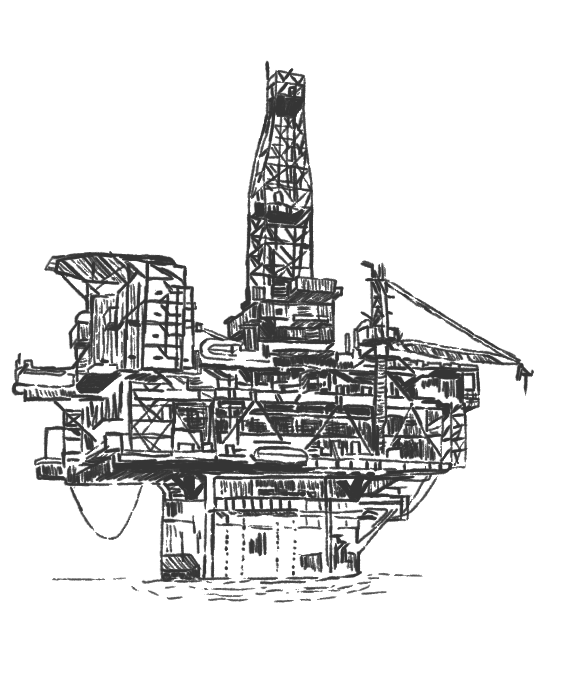Common Causes of Oilfield Accidents in Midland
Midland, Texas, is the home base of the Permian Basin, which produces over 14 percent of the U.S.'s oil, and its economic growth is driven by the 3.9 million barrels produced daily. However, this inexhaustible oil boom contributes to oilfield work being one of the most dangerous jobs, as the Permian accounts for 30 percent of all U.S. oil and gas-related worker deaths, despite representing only 2 percent of Texas's population. In 2024, OSHA reported 15 severe injuries in the Midland-Odessa area, including two fatalities. This represented a slight increase from 2023, when 13 severe injuries were reported in the Midland-Odessa area. Across Texas, 67 severe injuries were reported, with Midland-Odessa accounting for 15 of those cases, including 56 hospitalizations and 20 amputations. Many of these incidents stem from preventable causes linked to the region’s rushed fracking operations. At A2X Law, our nationwide team specializes in catastrophic and personal injury cases, advocating for oilfield workers harmed at Midland’s high-risk sites.
Why Oilfield Accidents Persist
From rigs on FM 1379 to wells in Reeves County, Midland’s oilfields are consistently racing to meet production goals, often sacrificing that safety. Rapid turnaround times, aging equipment, poor crew staffing, and overall lack of support create even greater risks; in fact, the Permian’s injury rate is seven times higher than the national average. OSHA’s 2024 inspections issued 316 citations and $1.4 million in penalties to Permian operators, highlighting systemic safety failures. Below, we examine the leading causes of oilfield accidents in Midland, drawing on OSHA and CDC data, to shed light on hazards and empower victims to seek justice.
1. Faulty Heavy Machinery: A Quarter of the Problem
Defective or poorly maintained equipment, such as drilling rigs, cranes, and pumps, accounts for approximately 25% of oilfield incidents in the Permian Basin. The fast-paced fracking cycle occurs when equipment is utilized at or near constant running speed, meeting output demands, which leads to wear and tear on critical components, such as hydraulic systems and drill bits. When equipment fails, it often leads to crushing injuries and amputations: 417 of which were reported nationwide between 2015 and 2022. Most violent machinery failures occur when workers are caught in the machinery. In Midland, the limited number of inspections and rushed repairs, due to personnel shortages, exacerbate this risk, especially on small rigs, which often have little to no scheduled maintenance or oversight.
2. Fires and Explosions: Flammable Vapors Ignite Disaster
Flammable Vapors Ignite Disasters: Fires and explosions caused by vapors like methane or hydrogen sulfide (H2S) account for roughly 15% of oilfield accidents and often lead to devastating consequences. Fracking in Midland utilizes volatile chemicals at high pressure; even the most minor leak can ignite from a spark or static. In many cases, exposure leads to severe burns, trauma injuries, or death. The Occupational Safety and Health Administration (OSHA) has reported 1,194 hospitalizations in the U.S. from 2015 to 2022 due to oilfield explosions alone. Given that the Permian produces at 3.9 million barrels each day, producers are pushed to skip safety checks, increasing the risk of devastating fires, such as those experienced in Reeves County, which would have been preventable.
3. Pressure Ruptures:
Shared liability often extends to heel injuries, which frequently precede serious pressure-related harm. Operating at thousands of PSI, pressure systems can fail when a valve, pipe, or other component becomes corroded or defective, leading to a sudden burst release that can cause severe injury or even death. In 2024, for the Permian alone, 20% of severe injuries from pressure systems led to amputation, brain injury, etc. The oil companies, based in Midland, pushed rigs far beyond their design limits to reemphasize pressure risk, both because no one tells the supervisors otherwise and because of the desperate labor shortage. Better technology options will help prevent pressure injuries in remote fields of severe operations.
4. Falls from Heights:
Twenty-five percent of oilfield fatalities are caused by falls from ladders, derricks, or elevated work platforms. For example, workers on 100-foot-tall drilling rigs in Midland run the risk of dying because they fail to fasten their harness, the slick circumstances, or their fatigued decision-making during 14-hour shifts. Since 2022, the number of falls in the Permian region has increased by 36%. Operators have received citations from OSHA for either failing to provide the required training to use guardrails correctly or for failing to use guardrails to prevent workers from falling on raised work surfaces. These falls typically result in spinal injuries or fatalities, especially for workers at rural drilling sites that are some distance from immediate medical treatment.
5. Vehicle-Related Incidents:
For oil and gas workers, motor vehicle accidents are the leading cause of death, with oilfield transport, which comprises big trucks carrying people or equipment, accounting for more than half of all fatalities. Every day, more than 10,000 trucks travel Midland's highways, including U.S. 285, and inexperienced or tired drivers who are hurrying to deliver goods sometimes cause collisions. Of the 897 commercial vehicle collisions that occurred in Midland-Odessa in 2024, one out of ten included an oilfield truck. These accidents deliver trauma where extensive injuries may follow; not to mention Midland's emergency response across the Permian Basin is already overloaded.
The Toll: Catastrophic Injuries and Economic Strain
Oilfield accidents in Midland result in life-altering injuries, amputations, burns, and neurological damage, burdening workers with medical costs often exceeding $500,000. Local hospitals were overburdened by the 15 serious injuries sustained by the Permian in 2024, and families had to deal with lost income in an area where oil occupations typically pay $80,000 a year. Midland's rates increased, reflecting the safety trade-offs of the boom, despite a 24% decrease in injuries in the state.
Safety Tips for Midland Oilfield Workers
- Inspect Equipment Daily: Check rigs and tools for wear before each shift to catch any defects.
- Use Proper PPE: Ensure harnesses and H2S monitors are functioning correctly, in accordance with OSHA standards.
- Report Hazards: Notify supervisors and OSHA of unsafe conditions, such as pressure leaks.
- Limit Fatigue: Avoid consecutive 14-hour shifts to reduce errors on rigs or roads.
- Drive Defensively: On U.S. 285, maintain distance from haulers to avoid collisions.
A2X Law: Your Advocates for Oilfield Accident Recovery
At A2X Law, we represent negligent Midland oilfield workers in intricate lawsuits against equipment manufacturers, contractors, and operators. Our expertise in Texas's opt-out workers' compensation system and OSHA infractions ensures the highest possible compensation for pain and suffering, lost wages, and medical expenses. To hold those culpable, we look into the underlying reasons, such as malfunctioning equipment, disregarded procedures, or careless driving. Call us today at
(361) 452-1279 for a consultation!
Request a Consultation
Other Practice Areas





